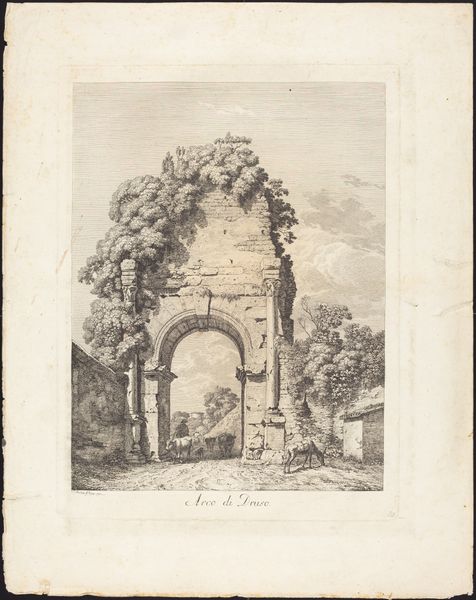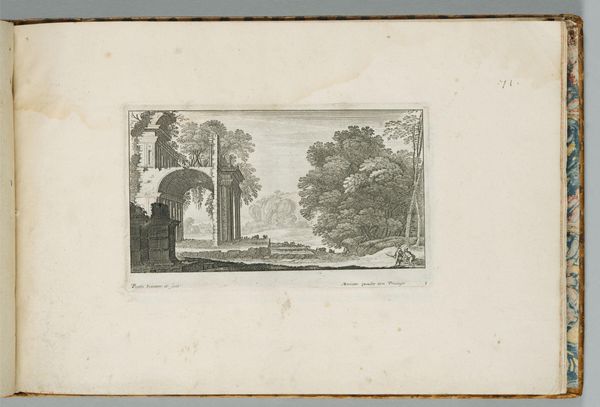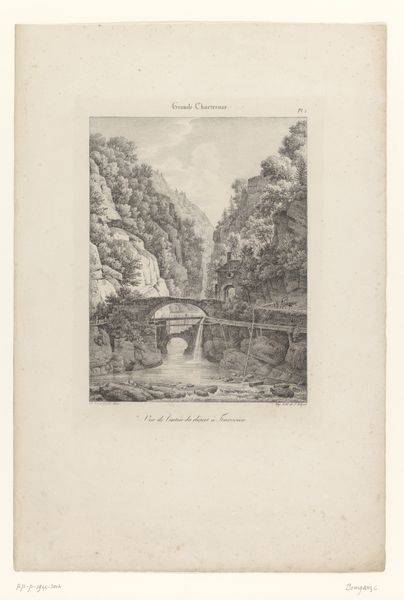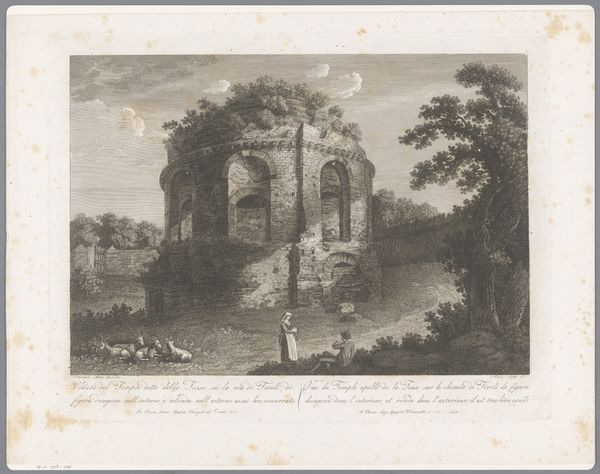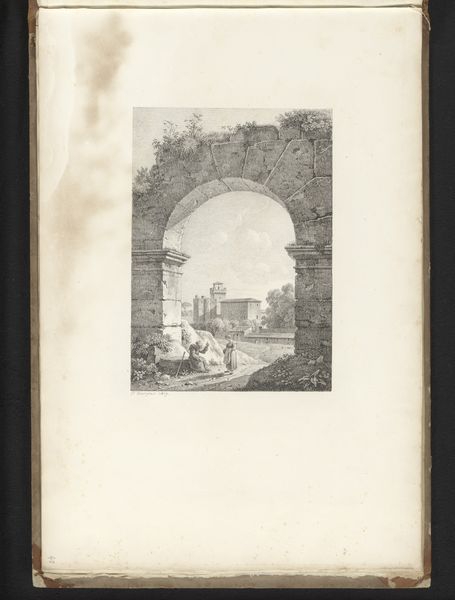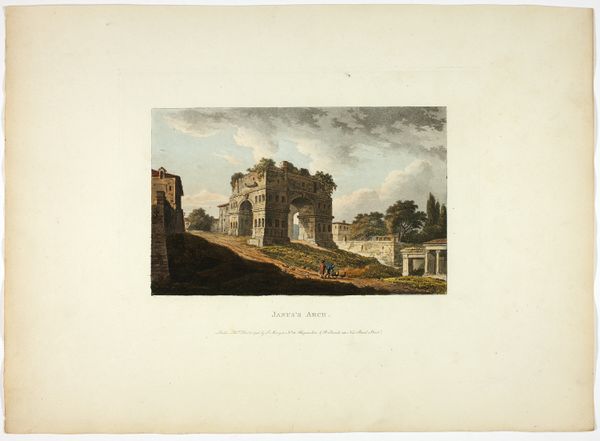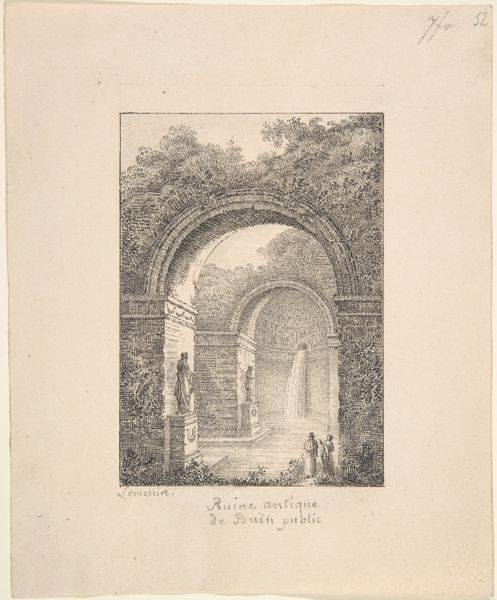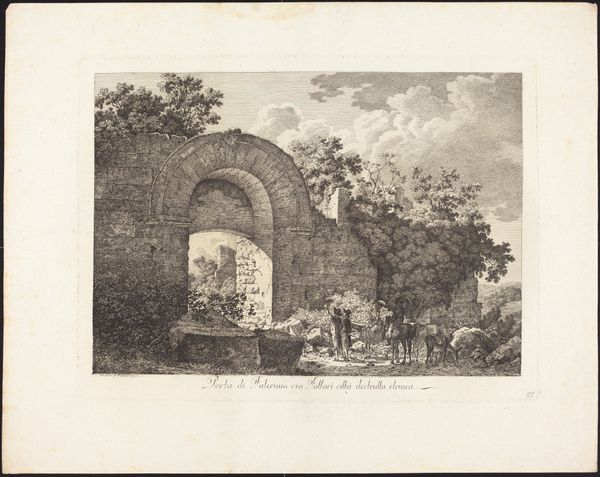
aquatint, drawing, coloured-pencil, print, etching, paper, watercolor, engraving
#
aquatint
#
drawing
#
neoclacissism
#
coloured-pencil
#
water colours
# print
#
etching
#
landscape
#
paper
#
watercolor
#
coloured pencil
#
cityscape
#
history-painting
#
engraving
Dimensions: 448 × 330 mm (sheet)
Copyright: Public Domain
Curator: Before us is "Titus's Arch, plate ten from the Ruins of Rome," an aquatint created circa 1796 by M. Dubourg, now residing here at The Art Institute of Chicago. Editor: What strikes me immediately is how somber it is, yet the rendering is so meticulous. The archway dominates, almost heavy, under the somewhat turbulent sky. Curator: Indeed, the piece leans heavily on neoclassicism, particularly in its detailed depiction of the architecture. Notice the crisp lines defining the structure, juxtaposed against the softening effects of the aquatint. There's a calculated interplay of precision and atmospheric suggestion. Editor: And consider what the arch represents, a Roman triumphal arch, but now depicted in a state of... decay? Covered by greenery at the top? It evokes themes of vanished glory, doesn’t it? Rome was at one point seen as the heart of the world, the universal place; but here we see this powerful image of what once was… altered, taken back by nature, if you will. Curator: Precisely, there’s a dialectic tension present in the surface itself between the geometry of the man-made structure and the organic life slowly taking root upon it. The formal contrast underscores a thematic one about the transience of power. The clouds contribute to the visual instability; one can practically feel a shift of tectonic and symbolic forces here. Editor: It is powerful. The choice of cool tones—greys and blues and the faded greens of decay – creates a poignant mood, one tinged with both loss and resilience, and if one allows that colors symbolize deep feelings or core ideas, it further communicates the melancholy beauty inherent in the idea of ruins. Curator: From a structuralist viewpoint, the arch itself frames another perspective, a promise of continuation despite its ruinous state. A fascinating and formally compelling composition. Editor: Yes, a piece that leaves us contemplating both history and the inevitable transformations of time and that makes us rethink ideas such as continuity, stability and even what the function of memory might be.
Comments
No comments
Be the first to comment and join the conversation on the ultimate creative platform.


